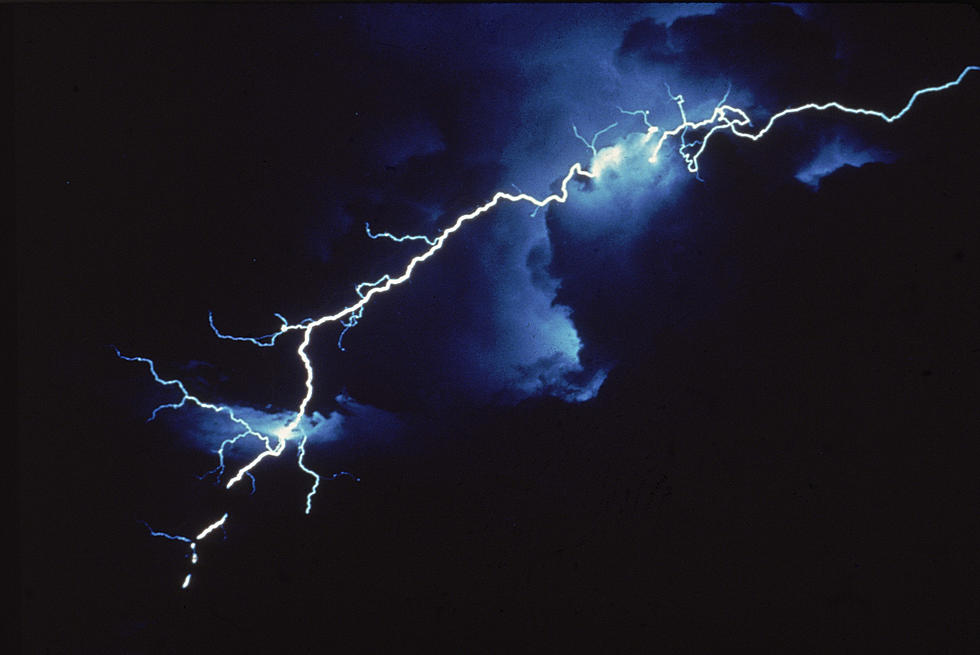
Severe Weather Terms Explained and What To Do When You Hear Them
We've certainly had a lot of springtime weather lately. Severe thunderstorm and tornado warnings; marginal, enhanced and moderate threat levels ... What do these terms actually mean? And what should we do when we hear them in our forecasts.
Our forecasts, whether it's for a sunny day or a Severe Thunderstorm, come out of the National Weather Service office in Norman, Oklahoma. These forecasters use specific terms to convey specific things.
What Are The Risk Categories?
When it comes the the chances or likelihood of severe weather they have different threat levels from Marginal to High.
The lowest threat level is Marginal. This would mean that severe thunderstorms are possible, but they'll be isolated, probably not last very long, and have a low potential for generating a tornado.
Next is Slight. Severe thunderstorms would be more likely, but still scattered and short-lived. Isolated intense storms are possible and the generation of one or two tornados is also possible.
In the Enhanced category numerous severe thunderstorms are possible, they will be more persistent and widespread, and could spawn a few tornados. Damage from strong winds and 1 to 2 inch hail is likely.
If the forecasters place us in a Moderate risk category we can expect widespread severe thunderstorms. They'll be long-lived and intense and will likely lead to strong tornados. Widespread wind damage and damage from hail up to 2 inches or greater can be expected.
When the forecasters place us in a High risk category things are really getting serious. In this category we should expect long-lived and widespread severe thunderstorm activity. These storms will likely be particularly intense and there is a strong possibility of a tornado outbreak in conjunction with these storms.
This is also where derecho storms enter the picture. A derecho is classified as a band of storms that have winds of at least 60 mph along the entire span of the storm front, maintained over a time span of at least six hours. These storms can move qickly and cause a great deal of damage over a very large area.
Once these risk levels have been determined a severe thunderstorm or tornado watch will usually be issued. Watches cover a large area and last several hours. This is simply the National Weather Service letting us know that something might happen and we should be alert to changing and developing weather conditions throughout the watch period.
When things actually develop in the watch area a warning will be issued. Warnings cover a much smaller area and usually last 30 to 45 minutes depending on how fast the storm system is moving. When a warning is issued for your area it means that a severe thunderstorm or tornado has been indicated on radar or confirmed by spotters on the ground in your area and you should take cover or prepare to take cover immediately.
Severe thunderstorm warnings are issued when a storm produces one inch or larger hail and / or maintains winds exceeding 58 mph for more than three minutes.
What should you do when these terms are in your forecast?
Before the storms hit you should already be weather-ready. Make sure you have multiple methods of getting weather updates. Local media like this radio station will keep you informed of the latest alerts and warnings, there are also several apps that you can download to your phone to keep you in the know. CodeRED alerts are recommended for Wichita Falls residents and will be sent directly to your mobile device when a warning is issued for your area, weather alert radios will constantly monitor the National Weather Service and sound an alarm when a watch or warning is issued, the National Weather Service and several other forecasting organizations have apps that you can load. Find those that work best for you and your family and familiarize yourself with them before the weather turns crazy.
You should also have a plan for your entire household. Know where the safest room in your home is and practice your severe weather drills from time to time. Practicing your tornado drills during severe thunderstorms warnings can take some of the fear away for the kids when there actually is a tornado bearing down on your location.
It's also a good idea to have a communications plan for your whole family. There's no guarantee that you'll all be together in a severe weather event so know how to contact everyone once the storm has passed.
You can get more tips on how to prepare before the storm and what to do after the storm on the National Weather Service website.





